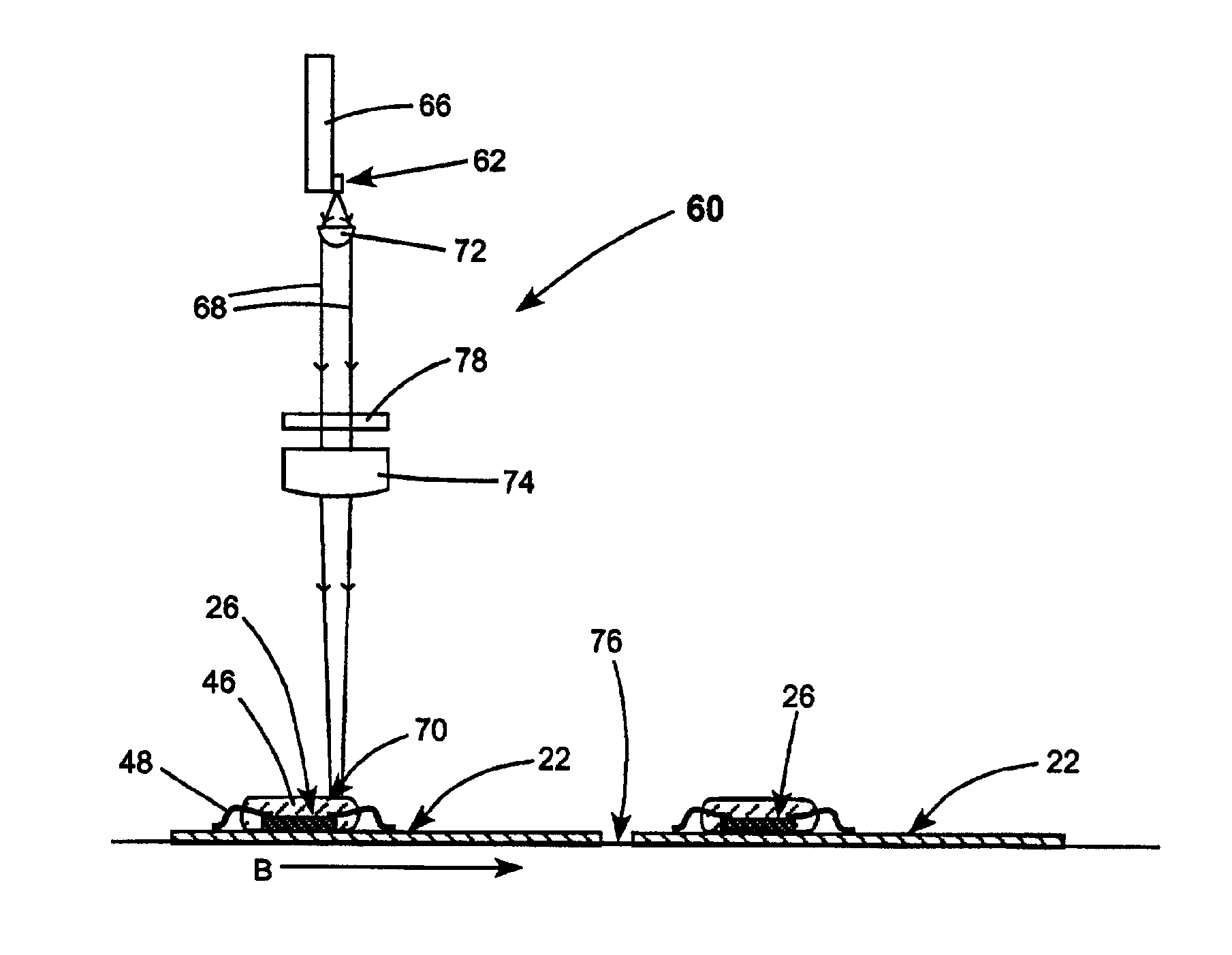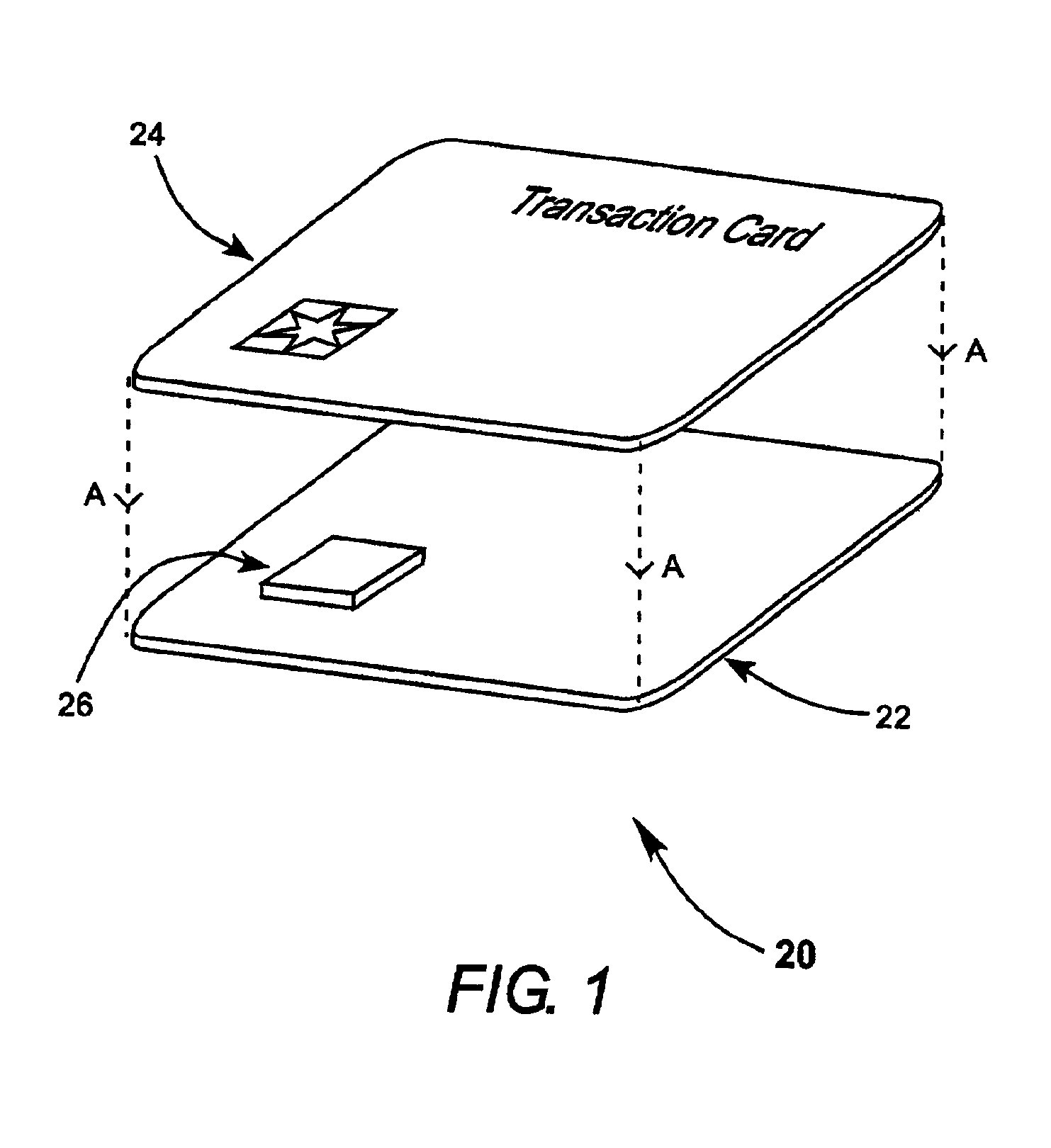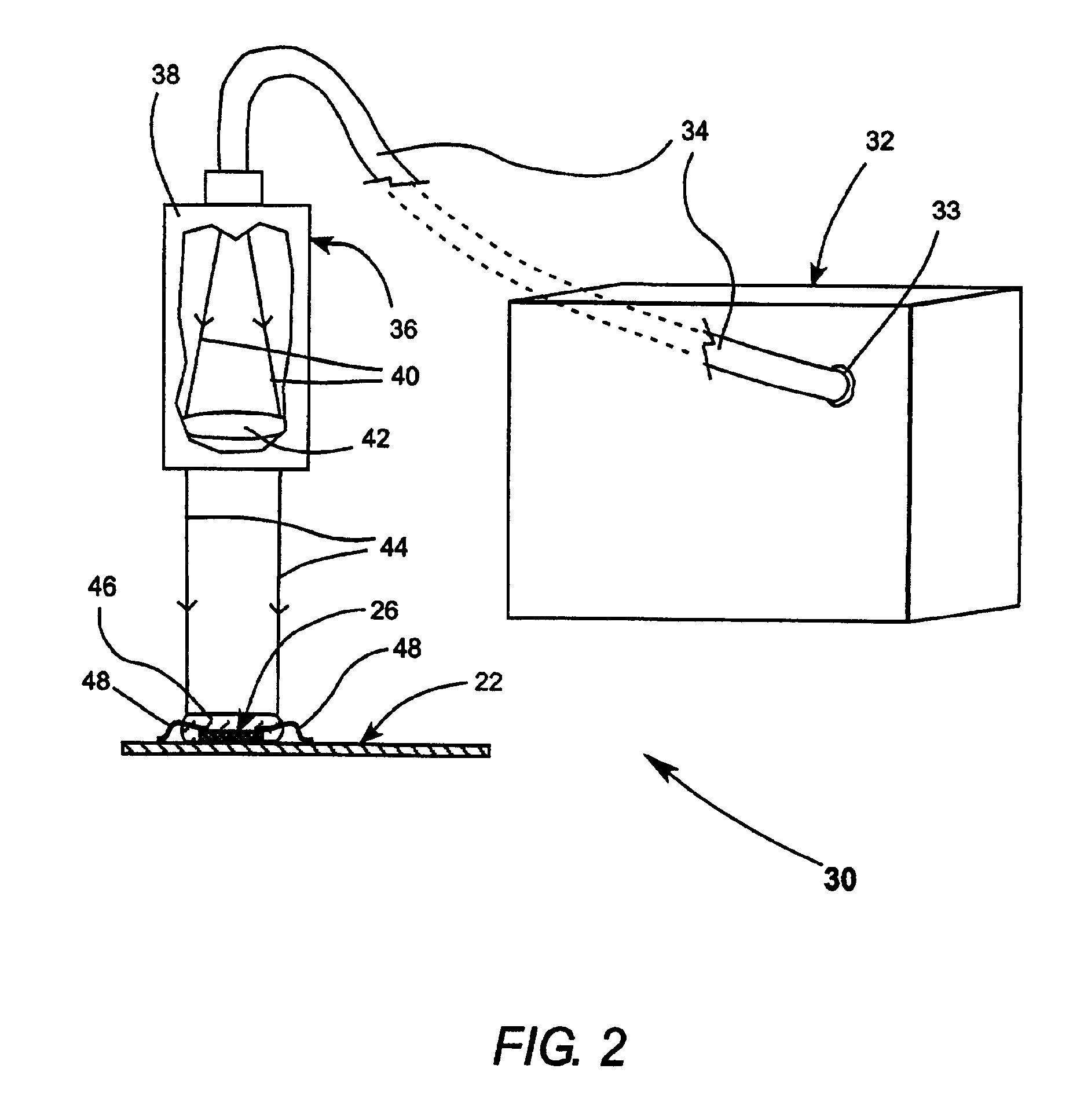Diode-laser curing of liquid epoxide encapsulants
a technology of liquid epoxide and curing electrode, which is applied in the direction of railway components, nuclear engineering, non-metallic protective coating applications, etc., can solve the problems of unparallel mechanical strength, high oven cost, and unfavorable mechanical strength, and achieves high electrical-to-optical conversion efficiency and no effect on cure or mechanical strength of resin
- Summary
- Abstract
- Description
- Claims
- Application Information
AI Technical Summary
Benefits of technology
Problems solved by technology
Method used
Image
Examples
Embodiment Construction
[0015]Referring now to the drawings, wherein like features are designated by like reference numerals, FIG. 1 schematically illustrates an example of a transaction card 20 having a substrate 22 with an IC chip 26 bonded thereon, and a cover 24. After IC chip 26 is bonded to substrate 22 and connected to other circuit components (not shown) the IC chip is encapsulated by the organic liquid matrix conversion method of the present invention and a cover 24 is laminated to substrate 22.
[0016]FIG. 2 depicts an example of apparatus 30 arranged for carrying out a preferred embodiment of the present invention for encapsulating IC chip 26 on a substrate 22. Apparatus 30 includes a diode-laser unit 32. Diode-laser unit 32 includes a high-power diode-laser array or diode-laser bar (not shown) the output of which is delivered to an optical-fiber connector 33. One suitable diode-laser unit capable of delivering up to 30 Watts (W) of diode-laser radiation is a FAP™ system available from Coherent®, ...
PUM
| Property | Measurement | Unit |
|---|---|---|
| wavelength | aaaaa | aaaaa |
| wavelength | aaaaa | aaaaa |
| wavelength | aaaaa | aaaaa |
Abstract
Description
Claims
Application Information
 Login to View More
Login to View More - R&D
- Intellectual Property
- Life Sciences
- Materials
- Tech Scout
- Unparalleled Data Quality
- Higher Quality Content
- 60% Fewer Hallucinations
Browse by: Latest US Patents, China's latest patents, Technical Efficacy Thesaurus, Application Domain, Technology Topic, Popular Technical Reports.
© 2025 PatSnap. All rights reserved.Legal|Privacy policy|Modern Slavery Act Transparency Statement|Sitemap|About US| Contact US: help@patsnap.com



